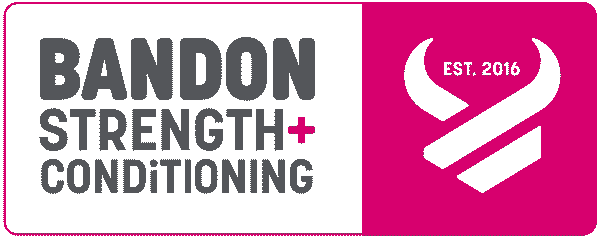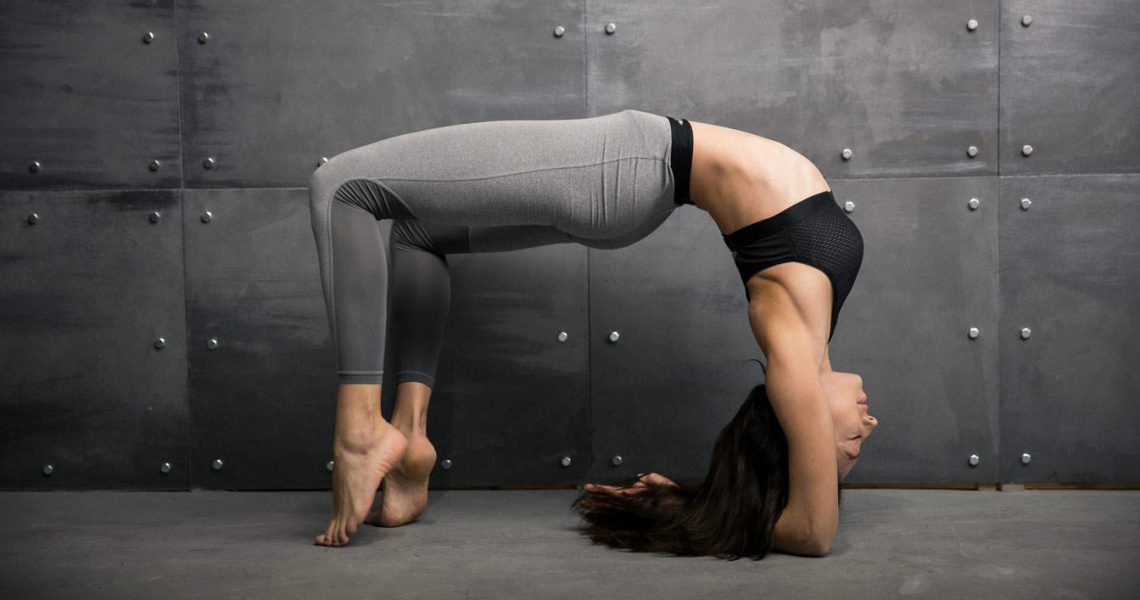Did you know that incorporating flexibility exercises into your fitness routine can have a profound impact on your overall well-being? Improving your flexibility not only enhances your athletic performance but also helps prevent injuries and promotes better functional movement. Whether you’re an athlete looking to optimize your training or simply want to increase your mobility for everyday activities, engaging in a regular stretching routine is the key to unlocking your full potential.
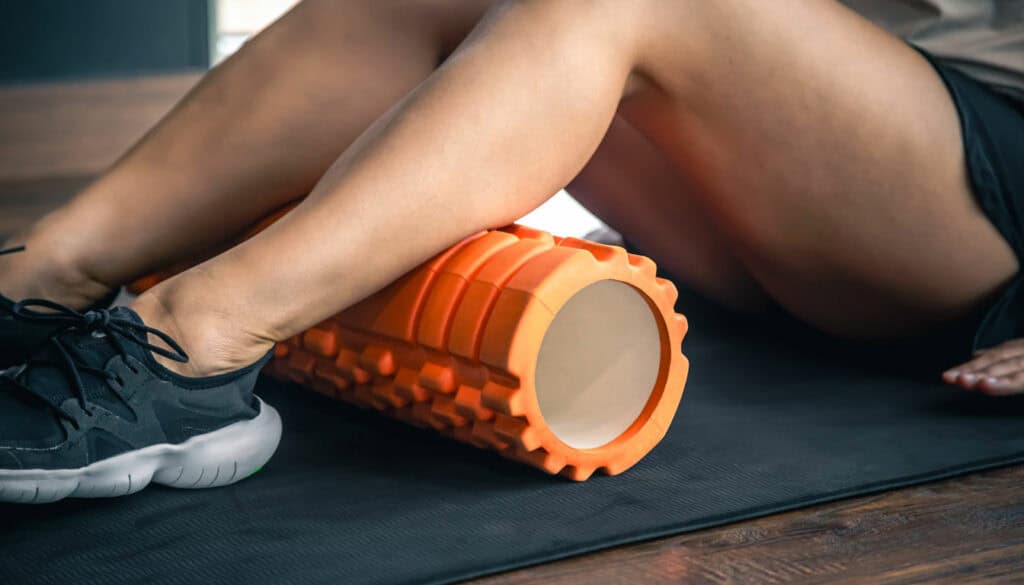
Key Takeaways:
- Flexibility exercises have numerous benefits, including improved athletic performance, injury prevention, and enhanced functional movement.
- Incorporating a variety of flexibility stretches and workouts into your routine can help increase your range of motion and promote better mobility.
- Flexibility training is suitable for individuals of all ages and fitness levels, and customized programs can be developed to meet specific needs.
- Consistency and patience are crucial in the journey to improve flexibility, as progress is gradual and sustainable.
- By embracing a flexibility program, you can experience the numerous benefits it offers, from increased mobility to better overall quality of life.
The Importance of Flexibility in Fitness and Everyday Life
In this section, we will define flexibility and discuss its role in health. We will explore how flexibility improves athletic performance and prevents injuries, as well as its influence on functional movement and its ability to enhance overall quality of life.
Defining Flexibility and Its Role in Health
Flexibility refers to the range of motion in a joint or a group of joints. It is an essential component of physical fitness that allows us to perform various movements and activities with ease and without pain or discomfort. Having good flexibility is not solely about being able to touch your toes; it encompasses the ability to move freely and efficiently throughout your daily life.
Improving flexibility has numerous health benefits. It helps to maintain joint health by reducing stiffness, which can lead to pain and limited mobility. Flexibility exercises promote better blood circulation, which improves nutrient delivery to the muscles and joints. This, in turn, aids in recovery and reduces the risk of musculoskeletal imbalances and injuries.
Furthermore, regular flexibility training can help improve posture, reduce muscle tension, and enhance overall body alignment. It can also contribute to better balance and coordination, reducing the risk of falls and enhancing performance in various activities.
Flexibility’s Impact on Athletic Performance and Injury Prevention
Flexibility plays a crucial role in athletic performance. Athletes with good flexibility can achieve a wider range of motion, allowing them to perform movements more efficiently and with less effort. Increased flexibility can enhance athletic performance in sports such as gymnastics, dance, martial arts, and many others that require movements involving high levels of flexibility.
Moreover, flexibility training helps prevent injuries in athletes. By improving the elasticity of muscles and connective tissues, it reduces the risk of strains, sprains, and muscle tears. Adequate flexibility also promotes proper biomechanics, ensuring that joints function optimally and are less susceptible to overuse injuries.
Functional Movement and Quality of Life Enhancements
Flexibility is not limited to athletic performance; it also plays a vital role in everyday life. Having good flexibility allows us to perform daily activities, such as bending, reaching, and lifting, without limitations or discomfort. It ensures that our movements are fluid, effortless, and efficient.
Flexibility also contributes to better functional movement, which refers to the ability to perform activities that are essential for independent living. These activities include walking, climbing stairs, getting in and out of a car, and even getting up from a chair or bed. Maintaining and improving flexibility can help individuals maintain their independence and quality of life as they age.
Furthermore, having good flexibility can positively impact mental well-being. It promotes relaxation, reduces stress, and enhances body awareness. Flexibility exercises, such as yoga and Pilates, are known to have a calming effect on the mind, helping to alleviate anxiety and improve overall mood.
| Health Benefits of Flexibility | Athletic Performance Enhancements | Quality of Life Improvements |
|---|---|---|
|
|
|
Dynamic Stretching: Activating Muscles for Enhanced Movement
Dynamic stretching is a vital component of any warm-up routine, as it plays a significant role in activating muscles and improving movement. Unlike static stretching, which involves holding a stretch for an extended period, dynamic stretching involves moving through a range of motion in a controlled manner. This type of stretching increases blood flow to the muscles and prepares them for physical activity.
One of the primary benefits of dynamic stretching is its ability to activate the muscles needed for the specific activity or exercise. By engaging the muscles through dynamic stretching, you are better primed for the movements and demands of the upcoming physical activity.
Dynamic stretching also helps in improving movement by increasing the flexibility and range of motion of the muscles and joints involved. This enhanced flexibility allows for more freedom of movement, reducing the risk of injury during physical activity.
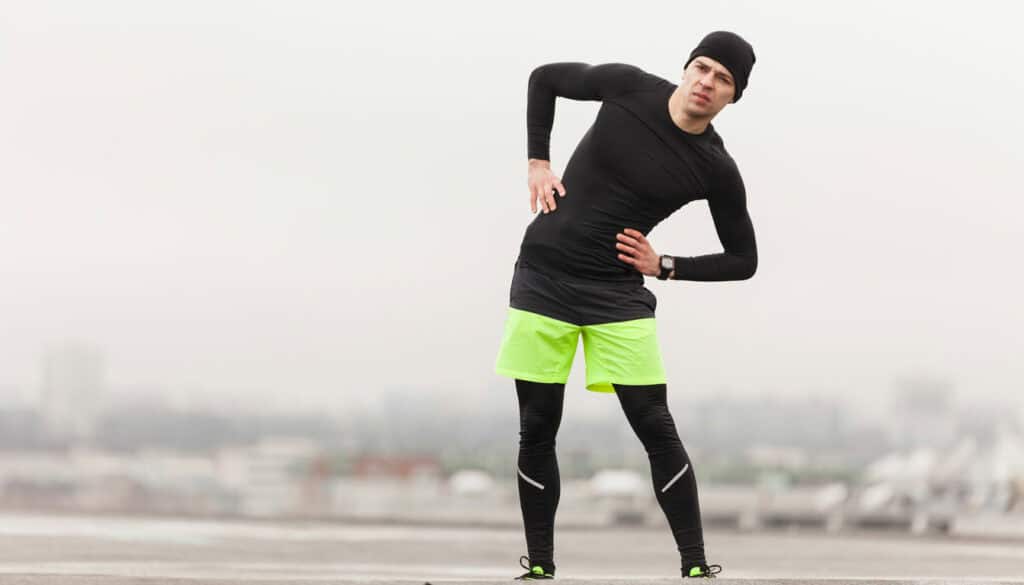
By incorporating dynamic stretching into your warm-up routine, you are not only preparing your muscles for physical activity but also improving your overall movement and reducing the likelihood of injury. It is a simple yet effective way to prime your body for optimal performance.
Flexibility Exercises: A Path to Improved Mobility
Incorporating flexibility exercises into your fitness routine can lead to significant improvements in mobility and range of motion. Whether you’re an athlete looking to enhance performance or an everyday individual seeking greater flexibility, these exercises are essential for maintaining a healthy body and preventing injuries.
Integrating Flexibility Training into Your Routine
Flexibility training should be an integral part of any well-rounded fitness program. By dedicating a portion of your workout to stretching and flexibility exercises, you can reap numerous benefits. Not only does it improve joint health and reduce muscle stiffness, but it also enhances your overall physical performance.
For effective integration, schedule flexibility training sessions two to three times a week. Aim for at least 10-15 minutes of stretching exercises per session. Consider incorporating dynamic stretches, static stretches, and proprioceptive neuromuscular facilitation (PNF) techniques to target various muscle groups and improve overall flexibility.
Remember that flexibility training is just as important as cardio and strength training. By prioritizing flexibility exercises, you can optimize your fitness routine and achieve better results.
Key Flexibility Workouts for Everyday Athletes
Whether you’re a recreational runner, a weekend warrior, or someone who simply enjoys active hobbies, there are specific flexibility workouts that can benefit athletes of all levels. These exercises focus on improving flexibility in critical areas such as the hips, hamstrings, calves, shoulders, and back.
Some key flexibility workouts for everyday athletes include:
- Hamstring stretches: These stretches target the back of the thighs and help improve flexibility in the hips and lower back.
- Quad stretches: Stretching the quadriceps muscles helps maintain good knee health and improves overall lower body flexibility.
- Shoulder stretches: These exercises focus on increasing flexibility in the shoulder joint, reducing the risk of shoulder injuries and improving upper body mobility.
- Calf stretches: Stretching the calf muscles improves ankle flexibility and reduces the risk of calf strains.
By incorporating these key flexibility workouts into your training routine, you can enhance your athletic performance, prevent injuries, and maintain optimal mobility for your chosen activities.
Stretching Routines for Diverse Age Groups and Fitness Levels
Flexibility exercises cater to diverse age groups and fitness levels, ensuring that individuals of all backgrounds can benefit from improved mobility. Whether you’re a teenager looking to enhance athletic performance or an older adult seeking to maintain flexibility for everyday activities, there is a stretching routine suitable for you.
For younger individuals and athletes, dynamic stretching routines that involve controlled movements through a full range of motion are particularly effective at improving flexibility. These routines help prepare the muscles and joints for physical activity, enhancing performance and reducing the risk of injuries.
On the other hand, older adults or individuals with limited mobility can benefit from gentler, static stretching routines. These exercises involve holding a stretch for a prolonged period to gradually improve flexibility and maintain joint range of motion.
It’s important to customize your stretching routine according to your age, fitness level, and specific goals. Consulting with a qualified fitness professional or physiotherapist can help you design a stretching routine that meets your individual needs.
When performing any stretching routine, always remember to warm up your body with light cardio exercises and start with gentle stretches. Listen to your body, and avoid forcing movements or experiencing pain during stretching exercises.
Static Stretching: Deepening Post-Exercise Flexibility
Static stretching is a valuable technique for improving flexibility and promoting muscle relaxation after a workout. By holding a stretch for an extended period, you can target specific muscles and gradually increase your range of motion. This type of stretching is particularly beneficial for deepening post-exercise flexibility.
After a workout, your muscles may feel tight and contracted. Static stretching helps to alleviate this tension by elongating the muscle fibers and promoting relaxation. It is an excellent way to wind down your workout and promote recovery.
By incorporating static stretching into your post-workout routine, you can enjoy several benefits:
- Improved flexibility: Static stretching helps to lengthen and release tension in the muscles, allowing you to achieve a greater range of motion.
- Enhanced recovery: By facilitating muscle relaxation, static stretching promotes faster recovery and reduces muscle soreness, enabling you to bounce back stronger for your next session.
- Reduced risk of injury: Increasing your flexibility through static stretching can help prevent muscle strains and injuries, as your muscles are better prepared for the demands of physical activity.
To perform a static stretch, simply hold the stretch position for 15 to 30 seconds, focusing on a gentle and sustained stretch without bouncing or jerking movements. Remember to breathe deeply and relax into the stretch.
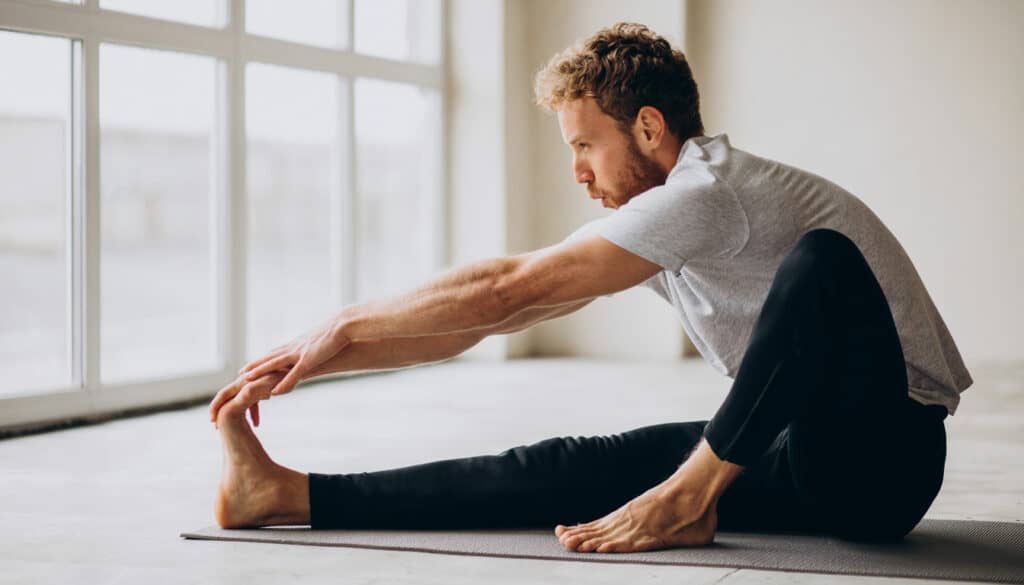
Incorporating static stretching into your post-workout routine can significantly enhance your flexibility and promote muscle relaxation. By investing a few minutes in static stretching, you can unlock the potential for greater freedom of movement and improved overall well-being.
Proprioceptive Neuromuscular Facilitation: Advanced Techniques for Flexibility
Proprioceptive Neuromuscular Facilitation (PNF) stretching is an advanced technique that combines muscle contraction and relaxation to improve flexibility. PNF stretching focuses on the body’s proprioceptors, which are sensory receptors that provide feedback on muscle length and tension, allowing for enhanced flexibility gains.
During PNF stretching, the targeted muscle is first stretched passively. Then, the individual actively contracts the muscle against resistance for a short period, typically around 5 to 10 seconds. This muscle contraction is followed by a relaxation phase, where the individual exhales and allows the muscle to relax while a partner facilitates a deeper stretch. This contract-relax technique helps to override the stretch reflex and increase the muscle’s length and range of motion.
PNF stretching techniques can be applied in various ways:
- Hold-Relax: The muscle is stretched passively, followed by an isometric contraction where the individual pushes against the stretch for several seconds, and then a deeper stretch is achieved during the relaxation phase.
- Contract-Relax: Similar to hold-relax, but this technique involves concentric muscle contractions instead of isometric contractions. The individual actively contracts the muscle against resistance, and then the partner assists in lengthening the muscle during relaxation.
- Hold-Relax with Agonist Contraction: This technique combines an isometric contraction of the target muscle with an isotonic contraction of the opposing muscle group. The contraction of the opposing muscle helps to facilitate a deeper stretch in the target muscle.
- Increased Range of Motion: By combining muscle contraction and relaxation, PNF stretching can lead to significant improvements in flexibility and increased joint range of motion.
- Improved Muscle Coordination: PNF stretching helps to improve muscle coordination and proprioception, enhancing the body’s ability to move effectively and efficiently.
- Enhanced Muscle Activation: The muscle contractions during PNF stretching activate the target muscle and stimulate neural pathways, promoting muscle strength and development.
- Promotes Relaxation: The relaxation phase of PNF stretching allows for muscle tension release, promoting relaxation and reducing muscle soreness.
It’s important to note that PNF stretching should be performed under the guidance of a trained professional to ensure proper technique and prevent injury. Incorporating PNF stretching into your flexibility routine can help you take your flexibility to the next level and achieve optimal results.
Enhancing Flexibility with Yoga and Pilates
Yoga and Pilates are popular practices known for their ability to enhance flexibility. In this section, we will explore the benefits of yoga for flexibility, including how it improves range of motion and promotes a limber body. We will also delve into Pilates movements that focus on core strength and flexibility.
The Benefits of Yoga for Flexibility
Yoga for flexibility offers numerous advantages for individuals looking to improve their range of motion. Regular yoga practice helps to stretch and lengthen muscles, tendons, and ligaments, resulting in increased flexibility over time. It also helps to improve muscle strength, which provides better support for the joints and aids in maintaining a wider range of motion. Moreover, yoga incorporates deep breathing and relaxation techniques that can reduce muscle tension and increase overall body awareness, allowing for smoother and more controlled movements.
By regularly practicing yoga for flexibility, individuals can experience a multitude of physical and mental benefits. Some key benefits include:
- Improved flexibility and mobility
- Increased body awareness
- Enhanced posture and alignment
- Stress reduction and improved relaxation
- Better balance and coordination
Moreover, yoga offers a holistic approach to fitness, benefiting not only the physical body but also promoting mental well-being through its focus on mindfulness and breath control.
Pilates Movements for Core Strength and Flexibility
Pilates is another highly effective practice that can significantly improve flexibility and core strength. While Pilates primarily focuses on strengthening the core muscles, it also targets flexibility through its unique movements and emphasis on proper body alignment. The controlled and precise movements in Pilates help to lengthen and stretch muscles, improving overall flexibility and joint mobility.
Pilates sessions often include exercises that target specific muscle groups, resulting in increased flexibility and improved muscle tone. By engaging the core muscles and promoting proper alignment, Pilates helps to create a stable foundation for movement, enhancing flexibility while minimizing the risk of injuries. Regular Pilates practice can lead to:
- Increased range of motion
- Improved core strength and stability
- Better posture and balance
- Enhanced muscle tone and flexibility
Ultimately, incorporating Pilates movements into your fitness routine can help you develop a more flexible body while also strengthening your core for improved overall fitness and physical performance.
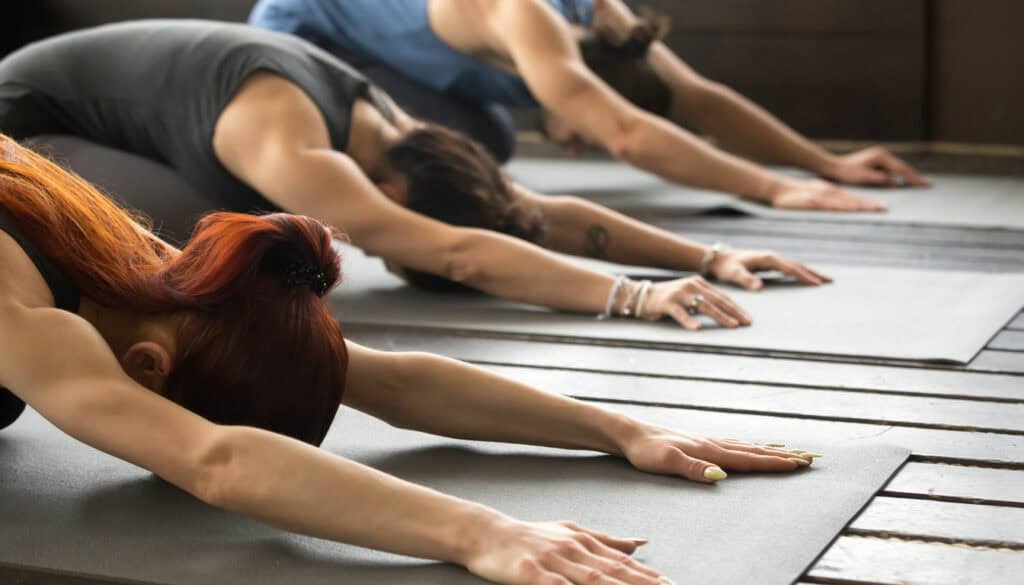
Foam Rolling and Myofascial Release for Flexibility
Foam rolling and myofascial release techniques are highly effective in releasing muscle tension and enhancing flexibility. Incorporating these techniques into your flexibility routine can provide significant benefits and help you achieve your flexibility goals. Let’s explore the advantages of foam rolling and myofascial release for flexibility and learn how to incorporate them into your routine.
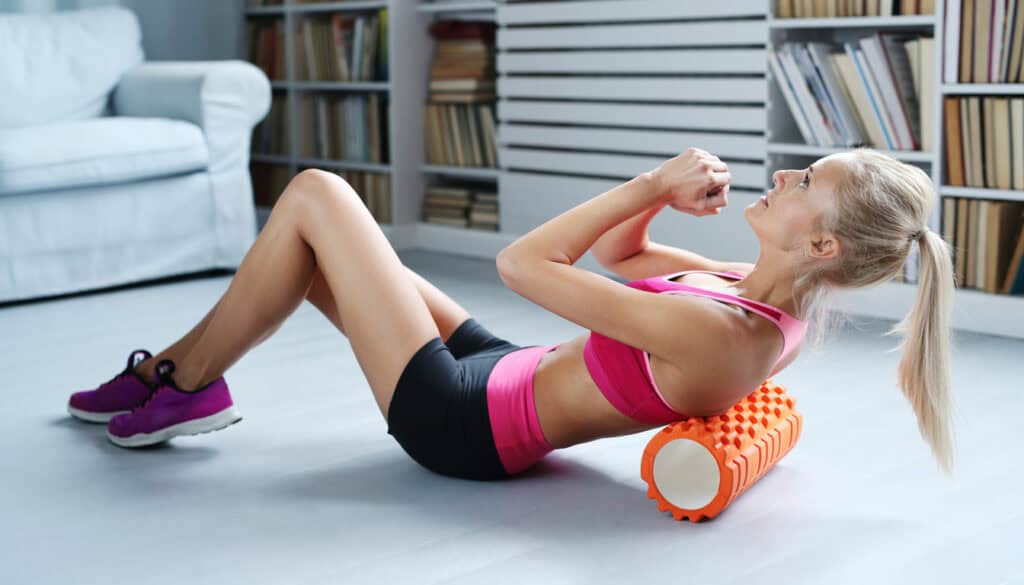
The Benefits of Foam Rolling and Myofascial Release
Foam rolling and myofascial release work by targeting the fascia, a connective tissue that surrounds and supports your muscles. By applying pressure to specific areas of your body using a foam roller or specialized myofascial release tools, you can release tension and knots in the fascia, promoting muscle relaxation and increasing flexibility.
Here are some key benefits of foam rolling and myofascial release:
- Enhanced flexibility: Foam rolling and myofascial release help improve muscle elasticity and joint range of motion, allowing you to achieve deeper stretches and movements.
- Muscle tension release: These techniques help release tight muscles, reducing muscle soreness and stiffness.
- Injury prevention: By releasing muscle tension, foam rolling and myofascial release can help prevent injuries caused by muscle imbalances and tightness.
- Improved recovery: Incorporating foam rolling and myofascial release into your post-workout routine can aid in muscle recovery and promote faster healing.
Incorporating Foam Rolling and Myofascial Release into Your Routine
To incorporate foam rolling and myofascial release into your flexibility routine, follow these steps:
- Choose the right tools: Invest in a high-quality foam roller or myofascial release tools that suit your needs and preferences.
- Warm up before foam rolling: Perform a light warm-up exercise, such as jogging or jumping jacks, to increase blood flow and prepare your muscles for foam rolling.
- Target specific areas: Focus on areas of your body that feel tight or tense. Roll slowly over each area, applying gentle pressure, and pause on any trigger points or knots to release tension.
- Maintain proper form: Use controlled movements and maintain proper form throughout the foam rolling process to ensure effective and safe results.
- Include myofascial release in your routine: Consider incorporating myofascial release techniques, such as using a tennis ball or lacrosse ball, to target smaller and harder-to-reach areas.
- Post-workout recovery: After your workout, spend dedicated time foam rolling and performing myofascial release to promote muscle recovery and relaxation.
By regularly incorporating foam rolling and myofascial release techniques into your flexibility routine, you can experience the numerous benefits they offer, including increased flexibility, reduced muscle tension, and improved overall well-being.
Developing a Gradual Progress Approach to Flexibility
When it comes to developing flexibility, a gradual progress approach is key. Rushing into intense stretches or pushing yourself too hard can lead to injury and setbacks. By taking the time to build a solid foundation and gradually increase your range of motion, you can achieve long-lasting results and minimize the risk of strain or discomfort.
Setting Realistic Flexibility Goals
Before embarking on your flexibility journey, it’s important to set realistic goals that align with your abilities and aspirations. Consider where you currently stand and where you want to be in terms of flexibility. Are you aiming to touch your toes without strain, perform advanced yoga poses, or simply improve your overall range of motion?
Remember, flexibility is highly individual and varies from person to person. Focus on setting goals that suit your body and abilities, rather than comparing yourself to others. Start with small, attainable targets and gradually increase the difficulty as you progress.
Assessing and Adjusting Flexibility Targets
Regularly assessing your flexibility is crucial for tracking your progress and making necessary adjustments to your flexibility targets. Consider incorporating the following methods to evaluate your range of motion:
- Range of Motion Assessments: Measure specific movements and note any improvements or limitations.
- Flexibility Tests: Use established flexibility tests to gauge your level of flexibility in different muscle groups.
- Functional Movement Assessments: Evaluate the quality and ease of your movement in everyday activities and sports-specific actions.
Based on your assessment results, adjust your flexibility targets accordingly. If you find that certain areas require more attention, focus on incorporating targeted stretches and exercises to address those specific muscle groups. Adapt your routine as needed to ensure consistent progress and challenge yourself appropriately.
By developing a gradual progress approach to flexibility, setting realistic goals, and regularly reassessing and adjusting your targets, you can enjoy steady and sustainable progress towards increased range of motion and improved overall flexibility.
Consistency and Patience: The Keys to a More Flexible Future
Consistency and patience are essential ingredients for achieving long-term flexibility. As you embark on your flexibility journey, it’s crucial to stay committed and maintain a regular routine. Consistency means showing up and dedicating yourself to the process, day after day. By incorporating flexibility exercises into your daily life, you’ll gradually build strength and improve your range of motion.
Patience is equally vital on this journey. Sustainable progress takes time, and it’s important to remember that flexibility is not something that can be achieved overnight. Rome wasn’t built in a day, and neither will your increased flexibility. It requires persistence and a steadfast commitment to the process.
Remember, everyone’s flexibility journey is unique. Our bodies are different, and progress may vary for each individual. Avoid comparing yourself to others and focus on your own sustainable progress. Celebrate the small victories along the way, knowing that each stretch and exercise brings you closer to your goals.
“Patience is not the ability to wait, but the ability to keep a good attitude while waiting.” – Joyce Meyer
By embracing consistency and patience, you set yourself up for success on your flexibility journey. Stay dedicated, trust the process, and you will undoubtedly see improvements over time.
Conclusion
Embracing the Flexible Journey: A Summary of Key Points
Throughout this article, we have explored the importance of flexibility in improving overall fitness and enhancing various aspects of life. Flexibility plays a crucial role in health by promoting better posture, reducing muscle tension, and improving circulation. It also has a significant impact on athletic performance, helping athletes achieve a greater range of motion and reducing the risk of injuries.
By incorporating flexibility exercises into your routine, such as dynamic stretching and yoga, you can enhance your mobility, activate your muscles, and promote better movement. Static stretching and proprioceptive neuromuscular facilitation (PNF) stretching techniques can deepen post-exercise flexibility and facilitate muscle relaxation.
To maintain steady progress, it is essential to set realistic flexibility goals and regularly assess and adjust your targets as you advance. Consistency and patience are key in developing a more flexible body, so stay committed to your flexibility routine and embrace the flexible journey.
Future Considerations for Your Flexibility Routine
As you continue on your flexibility journey, there are a few considerations to keep in mind. First, remember to listen to your body and avoid pushing yourself too hard, as this can lead to injuries. Pay attention to any discomfort or pain and modify your exercises accordingly.
Additionally, explore and experiment with different flexibility programs and workouts to keep your routine engaging and enjoyable. By adding variety to your exercises, you can target different muscle groups and prevent boredom.
Finally, seek professional guidance from a qualified trainer or instructor who can assess your current flexibility level and provide personalized recommendations and modifications. They can guide you towards new exercises, correct your form, and ensure you progress safely.
FAQ
What are some flexibility exercises I can do to improve my range of motion?
Some flexibility exercises that can help improve your range of motion include dynamic stretching, static stretching, and proprioceptive neuromuscular facilitation (PNF) stretching. Yoga and Pilates are also popular practices known for their ability to enhance flexibility.
Why is flexibility important in fitness and everyday life?
Flexibility is important in fitness and everyday life because it improves athletic performance, helps prevent injuries, and enhances functional movement and overall quality of life.
How does dynamic stretching contribute to improved movement?
Dynamic stretching contributes to improved movement by activating the muscles and preparing them for physical activity. It helps warm-up the body and improves muscle activation, which can lead to better movement during exercise or sports.
How can I incorporate flexibility training into my routine?
To incorporate flexibility training into your routine, you can set aside dedicated time for stretching exercises. You can also integrate flexibility exercises before and after your workouts or physical activities to improve your range of motion and prevent muscle tightness.
What are some key flexibility workouts suitable for everyday athletes?
Some key flexibility workouts suitable for everyday athletes include dynamic stretching routines, static stretching post-workout, and yoga sessions. These workouts can help improve mobility, prevent injuries, and enhance overall performance.
Is static stretching beneficial for deepening post-exercise flexibility?
Yes, static stretching is beneficial for deepening post-exercise flexibility. By holding a stretch for a prolonged period, static stretching helps relax the muscles and allows for a deeper stretch, which can lead to increased flexibility over time.
What are the benefits of proprioceptive neuromuscular facilitation (PNF) stretching?
Proprioceptive neuromuscular facilitation (PNF) stretching has several benefits for improving flexibility. It combines muscle contraction and relaxation techniques to increase range of motion, enhance muscle flexibility, and improve overall performance.
How does yoga help enhance flexibility?
Yoga enhances flexibility by improving range of motion, promoting a limber body, and increasing overall flexibility. Yoga poses and movements focus on stretching and lengthening the muscles, improving flexibility and suppleness.
What are some foam rolling and myofascial release techniques for enhancing flexibility?
Foam rolling and myofascial release techniques are effective in releasing muscle tension and enhancing flexibility. Using a foam roller or massage tools, you can target specific muscles to alleviate tightness and improve overall flexibility.
How can I set realistic flexibility goals?
Setting realistic flexibility goals involves assessing your current flexibility level, understanding your body’s limitations, and gradually increasing the intensity and duration of your flexibility exercises. It is important to set goals that are achievable and align with your fitness level.
Why is consistency important in achieving long-term flexibility?
Consistency is important in achieving long-term flexibility because regular stretching and flexibility exercises help maintain and improve range of motion. Consistent practice allows your body to adapt and become more flexible over time.
How can I maintain patience throughout my flexibility journey?
Maintaining patience throughout your flexibility journey involves understanding that flexibility improvements take time. It is important to focus on small progressions and celebrate each milestone along the way to stay motivated and committed to your flexibility routine.
Source Links
- https://www.americansportandfitness.com/blogs/fitness-blog/unlocking-flexibility-strategies-to-improve-flexibility-quickly
- https://www.womenshealthmag.com/fitness/a40059106/mobility-exercises/
- https://www.americansportandfitness.com/blogs/fitness-blog/elastic-energy-enhancing-your-workouts-with-stretching
